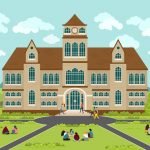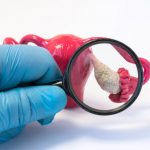Study: Effect of LSD on Communication Patterns Between Brain Regions
Node Smith, ND
A recent study led by researchers from the University of Zurich and Yale University has shown that LSD changes the patterns of communication between various regions of the brain.1 This research may provide insights into how mental health conditions develop as well as how psychedelic medicines may provide treatment for these disorders.
Lysergic acid diethylamide
Lysergic acid diethylamide, or LSD, is probably most well known as a recreational hallucinogenic drug. However, the drug was originally developed as a blood stimulant, and has a long history in psychological research. Recent interest in the potential therapeutic use of psychedelics in conditions such as depression and PTSD have rekindled an interest in the clinical use of LSD.
Researchers looked at brain scans to assess effects of LSD on healthy brains of study participants
During this recent study, researchers looked at brain scans to assess the effects of LSD on healthy brains of study participants. Data suggests that LSD may reduce communication between regions of the brain responsible for planning as well as decision making. Simultaneously, LSD was seen to increase connectivity between neural networks associated with movement and sensory perception.
During the study, it was found that changes in the brain caused by LSD are linked to the serotonin-2A receptor. “When we blocked this receptor using ketanserin, LSD stopped having an effect,” explains Katrin Preller, lead author of the study, who is currently also a visiting professor at Yale University. These receptors are targets for current depression treatments, and support the continued research of LSD for these conditions.
New findings may have an immediate impact on the treatment of psychotic symptoms as they occur
The changes in sensory perception and movement caused by LSD correlates well with the types of changes seen in psychotic conditions, such as schizophrenia. “The new findings may therefore also have an immediate impact on the treatment of psychotic symptoms as they occur in schizophrenia, for example,” says Franz Vollenweider, professor at the University Hospital of Psychiatry Zurich.
Schizophrenia is typically treated with antipsychotic medications that block some of the serotonin receptors assessed by this study. However, many patients don’t respond to these treatments. “By looking for similar patterns of brain activity identified in the study, clinicians may be able to identify which patients are most likely to benefit from these drugs,” explains Katrin Preller.
Source:
 Node Smith, ND, is a naturopathic physician in Portland, OR and associate editor for NDNR. He has been instrumental in maintaining a firm connection to the philosophy and heritage of naturopathic medicine among the next generation of docs. He helped found the first multi-generational experiential retreat, which brings elders, alumni, and students together for a weekend camp-out where naturopathic medicine and medical philosophy are experienced in nature. Four years ago he helped found the non-profit, Association for Naturopathic ReVitalization (ANR), for which he serves as the board chairman. ANR has a mission to inspire health practitioners to embody the naturopathic principles through experiential education. Node also has a firm belief that the next era of naturopathic medicine will see a resurgence of in-patient facilities which use fasting, earthing, hydrotherapy and homeopathy to bring people back from chronic diseases of modern living; he is involved in numerous conversations and projects to bring about this vision.
Node Smith, ND, is a naturopathic physician in Portland, OR and associate editor for NDNR. He has been instrumental in maintaining a firm connection to the philosophy and heritage of naturopathic medicine among the next generation of docs. He helped found the first multi-generational experiential retreat, which brings elders, alumni, and students together for a weekend camp-out where naturopathic medicine and medical philosophy are experienced in nature. Four years ago he helped found the non-profit, Association for Naturopathic ReVitalization (ANR), for which he serves as the board chairman. ANR has a mission to inspire health practitioners to embody the naturopathic principles through experiential education. Node also has a firm belief that the next era of naturopathic medicine will see a resurgence of in-patient facilities which use fasting, earthing, hydrotherapy and homeopathy to bring people back from chronic diseases of modern living; he is involved in numerous conversations and projects to bring about this vision.








